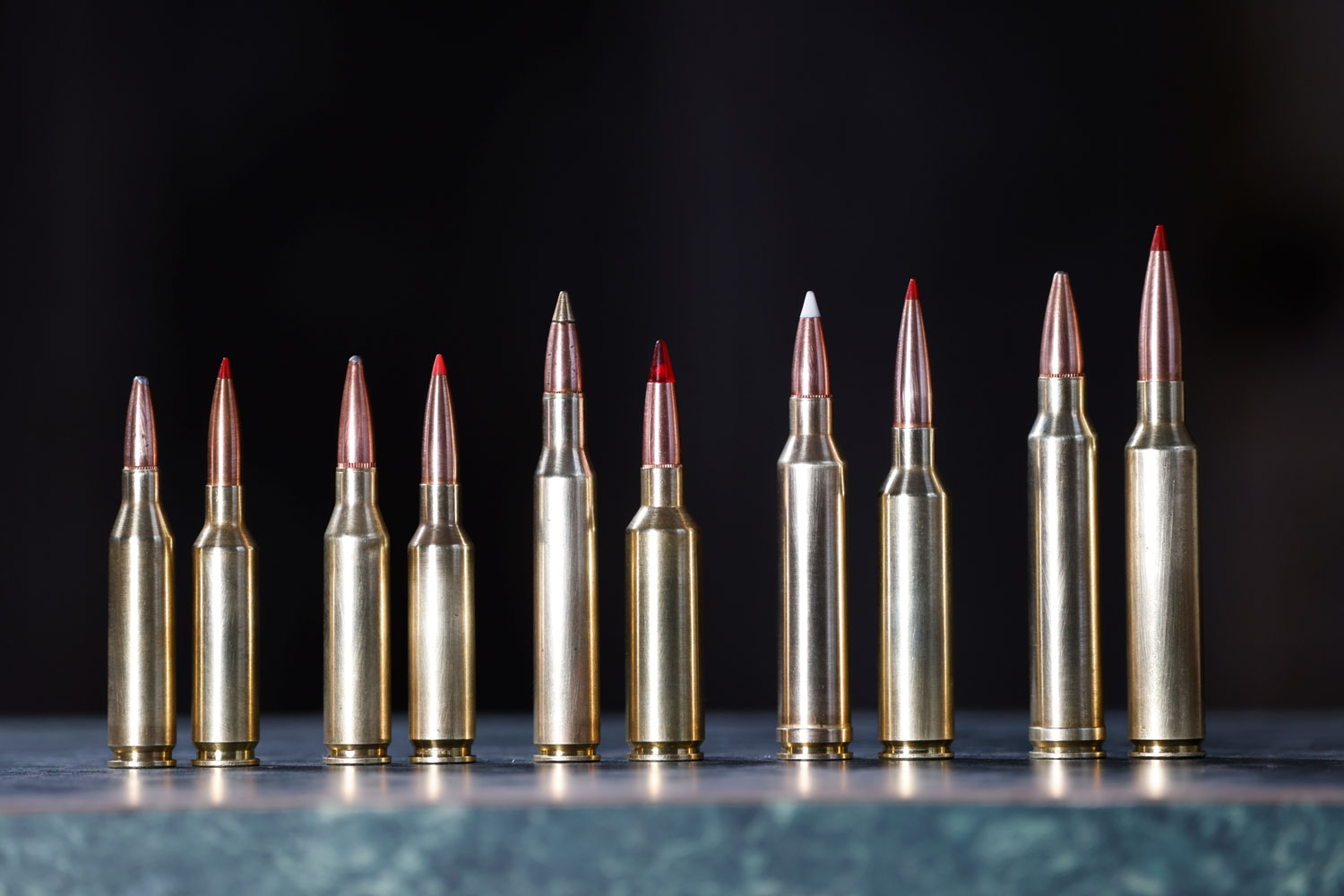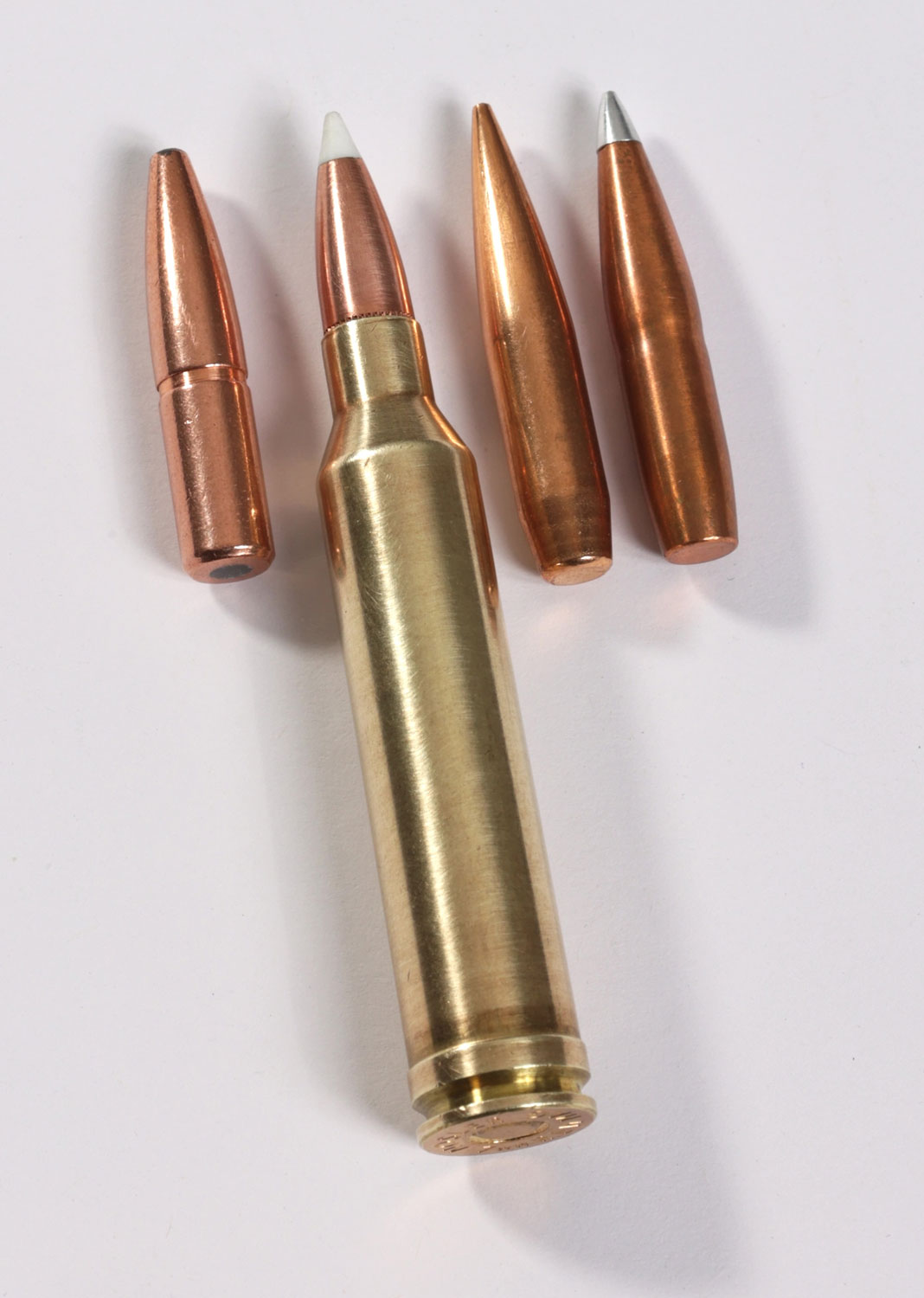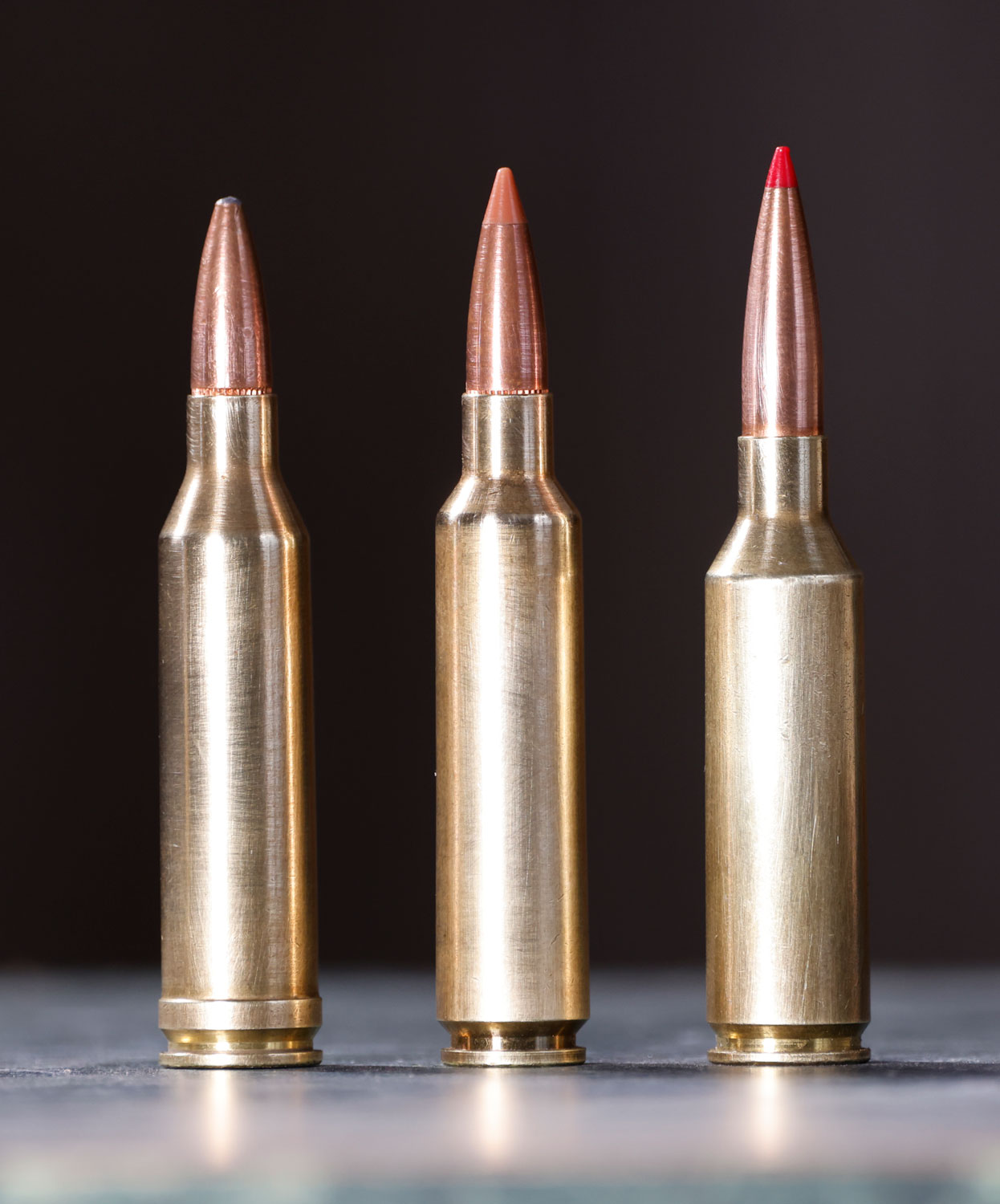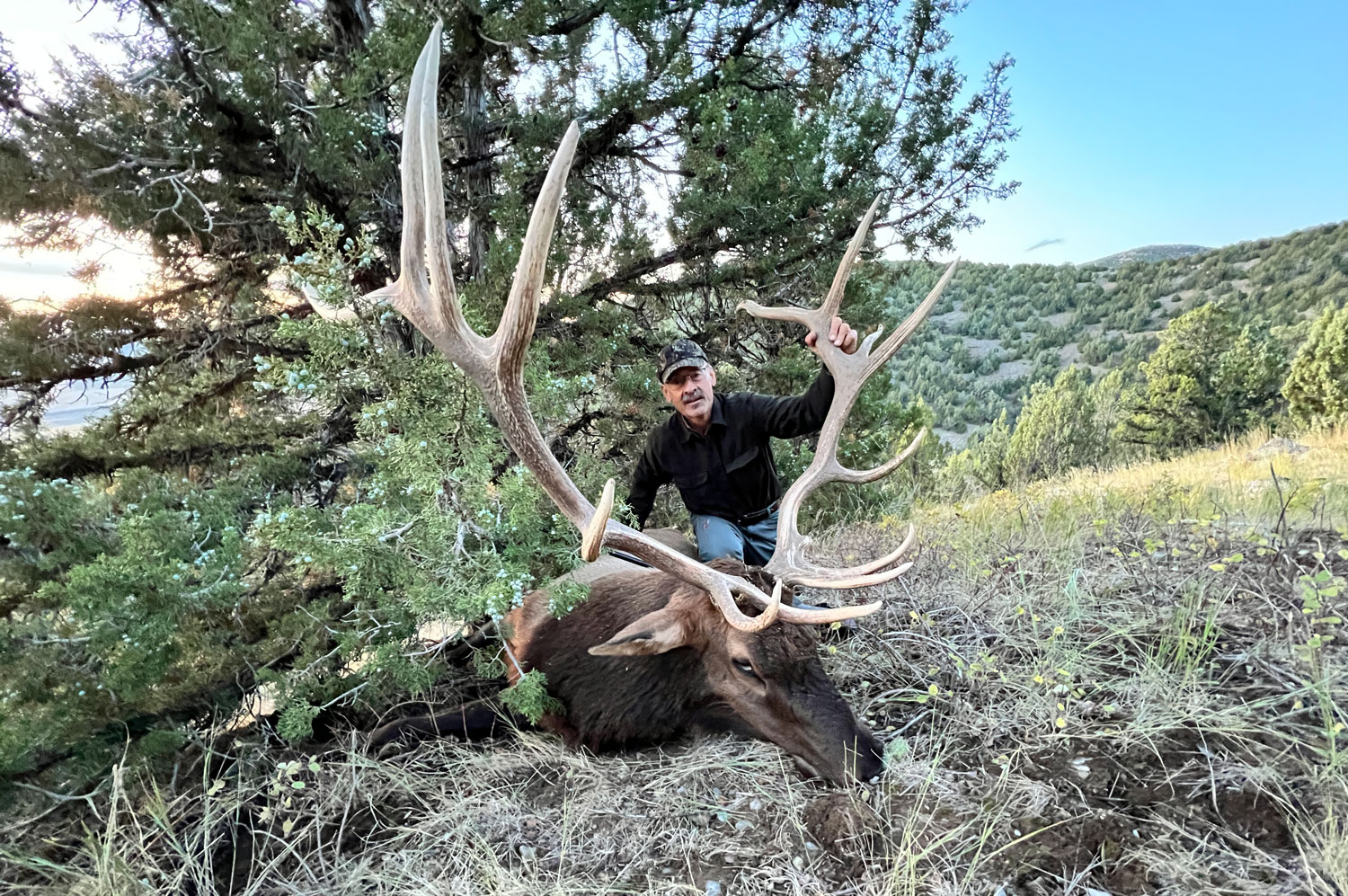Another flight around the sun and here we are, 138 years after the invention of the first centerfire, bottlenecked, smokeless powder cartridge, the 8x50mm Lebel, watching cartridges evolve. For better or worse.
The “better” part of this equation are the bullets. In our ongoing fascination with rifles and “calibers,” as we colloquially but inaccurately call cartridges, we give short shrift to the one piece of the puzzle for which all else exists: the projectile.
This strikes many experienced hunters as odd because, generation after generation, we discuss and argue rifles and cartridges endlessly, but rarely bullets. Some veteran hunters and deadly shots still do not differentiate between a cartridge and bullet. That is changing as the market and marketing become increasingly saturated with bullets competing for your dollars. The 20th century’s “Deadliest Mushroom in the Woods” now competes with an alphabet soup of bullets: ELD-X, TTSX, CX, CuT, Hammer, Raptor, Bulldozer, Terminal Ascent, Impact, Tipstrike, Copper Impact, Bear Claws and even T-Rex. We could be on the cusp of hearing “I got him with a 165-grain XXX bullet” rather than “I nailed him with a 300 Win. Mag.”

Look and see. Side-by-side comparisons show the “head space” differences between old and new cartridges of the same caliber. From L. to R.: 243 Win vs. 6mm Creedmooor; 260 Remington vs. 6.5 Creedmoor; 270 Win. vs. 6.5 Western; 7mm Remington Magnum vs. 7mm PRC; 300 Winchester Magnum vs. 300 PRC.
I consider that good evolution because it’s what we should be paying attention to. It more accurately reflects what terminates our bucks and bulls. Our new bonded, partitioned, monolithic and hybrid bullets deliver external and terminal ballistics with remarkable efficiency and efficacy compared to the cup-and-core projectiles of yesteryear. Not that those old bullets didn’t get the job done. It’s just that they failed often enough to inspire dozens of new options, the best of which we enjoy today. They fly more efficiently, deflect less in crosswinds, carry more energy on arrival, expand more consistently and penetrate more deeply.

The long bullets on the right would protrude deeply into the powder space of this 7mm Rem. Mag. cartridge if seated to the round’s maximum cartridge length of 3.290 inches. Even a traditional 175-grain bullet like the Swift A-Frame on left takes up some powder capacity. The new cartridge format addresses these issues in the 7mm PRC and similar cartridges.
Part and parcel of our newfound interest in bullets can be blamed on the new cartridge template, which makes many of the new bullet designs viable. This seems to have begun with the controversial 6.5 Creedmoor in 2008. This was the first new round featuring something the industry is beginning to call “head room,” not to be confused with headspace. The latter is the distance from the closed bolt face to the cartridge stopping point in the chamber. Head room is the space reamed into the throat/leade of the chamber to accommodate all these new, extra-long bullets without seating them deeply into their case’s powder spaces. You can see this by comparing a 270 Winchester Short Magnum with its offspring, a 6.8 Western. Both are short-fat cartridges that shoot .277-inch bullets, but the 6.8 Western has been engineered (the shoulder pushed slightly back) to hold bullets as long as 1.5 inches and as heavy as 175 grains without their shanks sitting below the shoulder/neck junction. They thus fit most short-action rifle magazines without sacrificing powder capacity due to the incursion of a long bullet shank. Their barrels, of course, are rifled 1:8 inches or 1:7.5 inches twist to stabilize long, high B.C. bullets.

The shape of things to come (and they’re already here) is exemplified by the 6.8 Western in the center. It’s merely the 270 WSM with the shoulder pushed back slightly to create more head room for heavy, long, high B.C. bullets. The old 270 Winchester on the right stands in stark contrast with its short bullet projection.
This layout has become the pattern for most new cartridges that otherwise seem redundant. The 6.8 Western shoots no faster than the old 270 WSM. It’s actually a tad slower, but the heavier, higher B.C. bullets it flings have the aerodynamics to resist drag and deliver better downrange performance. Similarly, the 6.5 Creedmoor of 2008 only matched the velocity of 1894’s 6.5×55 Swede, but because it fit perfectly into short-action rifles and was topped with the latest, aerodynamically efficient bullets, it revolutionized the long-range target shooting world and then bled into the hunting fields, fueling controversy along the way.
Other features becoming standard on our new cartridges include minimally tapered side walls, 30-degree shoulders, a beltless body with diameter equal to or greater than the belt diameter of our older 375 H&H family of magnums, and necks at or slightly longer than caliber. The new rounds can be designed to the 2.26-inches maximum overall length of the 223 Remington (to fit AR-15 magazines and actions,) 2.8-inches to fit standard short-action magazines, 3.34-inches to snuggle into 30-06-length magazines or 3.6-inches to take full advantage of 375 H&H Magnum magazines.
Examples of these 21st century cartridges include, but are not limited, to: 22 Nosler, 24 Nosler, 22 Creedmoor, 6mm Creedmoor, 6.5 PRC, 6.8 Western, 7mm PRC and 300 PRC. Expand the criteria to include 35-degree shoulders and you let in the 26, 27, 28, 30, 33 Noslers and arguably the Remington Ultra Magnums.

Evolution of 6.5mm cartridges has included many over the years. Remington’s 6.5 Remington Magnum of 1966 (left) came darn close to nailing what has become the template of today’s 6.5 PRC. The belt and 25-degree shoulder seem to be its only short comings. The 6.5-284 Norma of 1999 was another close call, but its shoulder appears to be a bit too far forward to optimize bullet seating depth and perfect fit within short-action rifle magazines. The 6.5 PRC (right) has hit all the correct parameters.
The $64,000 question (which, with today’s inflation, isn’t much of a question) hanging over all of them is what the new wonder cartridges bring to a table already filled with effective 20th century cartridges? It isn’t as if the 6.5×55, 270 Winchester, 300 Win. Mag. et al. haven’t been hauling the mail all these decades. What do the new kids on the block add? The answer seems to be easier shot placement.
Yes, putting a bullet where it’s needed is the holy grail of all rifle, cartridge, primer, powder and bullet development. The new-fangled “head room” cartridges do that by driving and stabilizing bullets with the highest ballistic coefficients ever measured. Hornady’s old 175-grain InterLock .284-inch bullet is rated G1 B.C. .462. Nosler rates its 175-grain Partition .519. These bullets were 20th century standards, proven penetrators ideal for elk, moose and bears. But Hornady’s new 175-grain ELD-X pushes G1 B.C. to .675. Nosler’s AccuBond Long Range runs B.C. to .648. Muzzle velocities are the same, but impact velocities at all distances are significantly improved. That .675 B.C. bullet at 3,000 fps carries 344 foot-pounds more energy than the old .462 B.C. InterLock launched at the same 3,000 fps. It deflects 2 inches less in a 10-mph crosswind, too.
Aerodynamic improvements such as these do not radically minimize drop, but they certainly minimize deflection, and wind deflection remains what it always has been—the most unpredictable part of bullet dispersion. A sleek bullet design that reduces wind deflection an inch or two at 300 yards can make the difference between a heart shot and a gut shot. At longer ranges the higher B.C. bullets can reduce wind deflection by feet. Push a .351 B.C., 220-grain Partition 2,990 fps and a .650 B.C., 220-grain ELD-X 2,990 fps with a 30-378 Weatherby Magnum and at 300 yards the Partition will deflect 4 inches more in a 10-mph right angle breeze. At 600 yards this widens to 21 inches, and at 800 yards 43 inches. Attempting to compensate for that with a tighter wind call isn’t one’s best option. A new cartridge engineered for high B.C. bullets is. (And, yes, so is stalking closer, but as many a sheep, goat or even Rocky Mountain elk hunter can attest, 300 yards is often a close shot in big country.)
These developments have many veteran hunters pondering. Do we need these new wonder cartridges? Is my old 7mm Remington Magnum obsolete? Can my 30-06 no longer make meat? Must I upgrade? Or can I just load the new bullets in the old cartridge?
“No” is the answer to the first four questions. Hunters have been taking big game reliably for more than a century with classic rounds such as 30-06. The magnums of the 1960s are as reliable and deadly now as they were then. However, if you are intrigued by the idea of something even better, the new high B.C. bullets and efficient “head room” cartridges might be entertaining, efficient and fun. Even loading the new bullets on the old platforms can work so long as you have the rifling twist rate to stabilize them. The longer the bullet, the faster the rifling must be. You’ll sacrifice a tiny bit of muzzle velocity by seating long bullets deeply, but their aerodynamic efficiency will more than offset that.

A 7mm PRC might have made it easier to hit this bull from 413 yards, but an old fashioned 7mm Remington Magnum pushing a 139-grain LRX bullet sufficed.
What does all this portend forour traditional cartridges? Many of them, I suspect, will fade away as did dozens of cartridges of the past that once reigned supreme. Remember the 257 Roberts? The 300 Savage? The 222 Remington? Who chambers rifles for those now? Crazy though it seems, I’m guessing the 7mm Remington Magnum will slowly drift into the trunk as the 7mm PRC climbs into the driver’s seat. The 6.5 PRC could become the standard .264. The 22 Creedmoor should replace the aging 22-250 Remington at the top of the 22 centerfire class. The 30-caliber family is more complicated. Will the 300 PRC overshadow the 300 Winchester Magnum, 300 WSM, 300 RUM, 30 Nosler and all the rest?
Only time will tell, but one thing is certain—change. It should be an interesting next 50 years.

